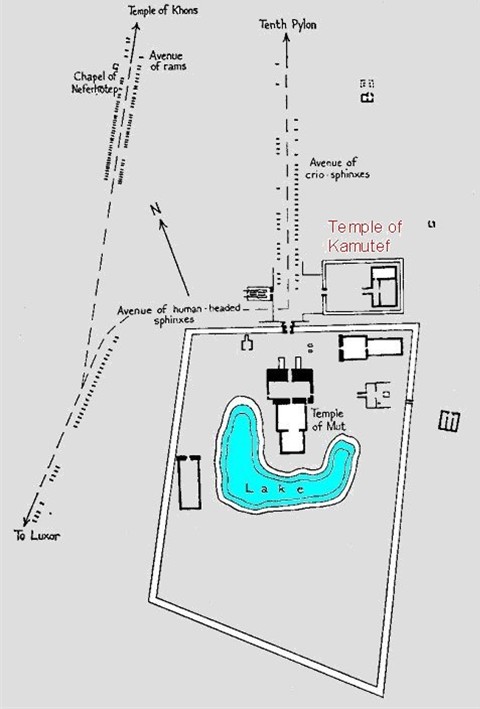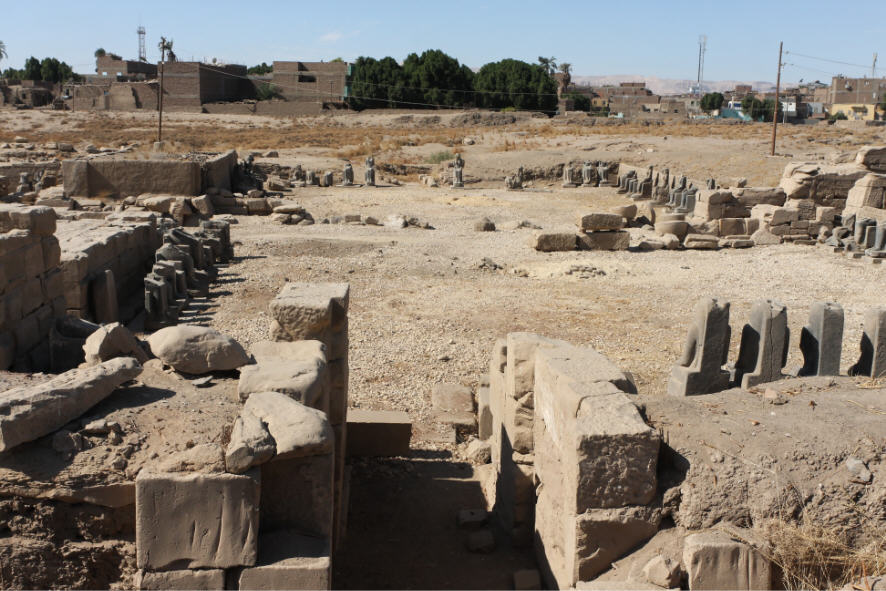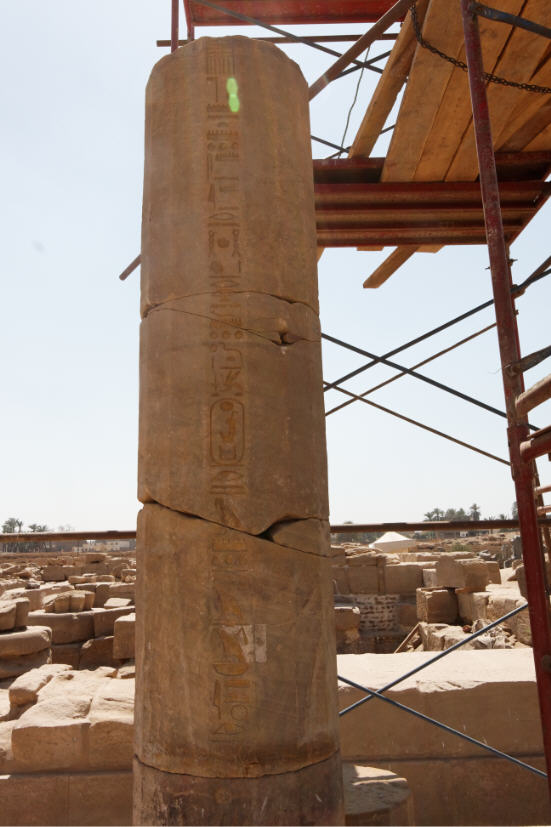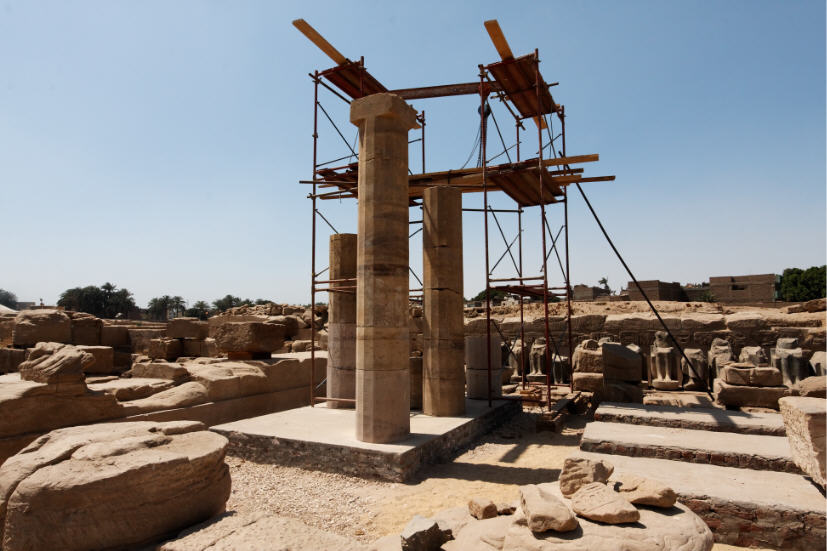|
Maat-ka-Ra Hatshepsut |
last update: 29.08.2010 | |
|
The Temple of Mut of Isheru |

| Precinct of Mut (according to: Porter & Moss, II, Plan XXIV) |
| South of the Great Temple of Amun and linked to this by a causeway which is lined by ram-headed sphinxes (crio-sphinxes) lies the precinct of Mut, the consort of Amun. The temple precinct is completely enclosed by a mud-brick wall. |
| On its the south side a sacred lake (= Isheru) encloses the temple of Mut from three sides. The area south of the sacred lake may been area of buildings (such as bakeries, workshops, etc.) supporting the temple complex. |
| In addition the holy district encloses several smaller temples, in the northeast corner the temple Khonsu-par-khered (Khonsu-the-Child), south of the temple Khonsu-par-khered lies a "Temple Haut", west of the lake are the remainders of a temple built by Ramses III. |

| Forecourt of the temple of Mut, flanked by statues of the goddess Sekhmet. On the right the northern gate leading to the road to Karnak, left the gate of the pylon. |
| Apparently, a temple for the goddess Mut was built for the first time in the early New Kingdom by Hatschepsut and Thutmosis III or even already during the Middle Kingdom. During the reign of Amenhotep III the temple was completely rebuilt. Thus, the remains still visible today (e.g. the forecourt with numerous statues of Sekhmet; see photo above) mostly reflect the building activity of Amenhotep III. |
| After Amenhotep III Tutankhamun, Rameses II and III, Nectanebo, Alexander the Great and a few Roman rulers had dismantled, restored, added to or enlarged the temple. |
| Up to now the archaeological evidence for a building activity at the temple under Hatshepsut (and Thutmosis III) were missing. However, the "Procession Géographique, (block 179, scene 5 )" of the Red Chapel mentions a building activity for the goddess Mut of Isheru. |
| The excavations done by the John Hopkins University under the direction of Betsy Brian brought to light during the the last years an increasing number of blocks from the time of Hatshepsut and from Thutmosis III, which were obviously re-used in the foundation of the new temple built by Amenhotep III. |
| Among the recovered blocks are numerous parts belonging to 16-sided columns as Hatschepsut had used for example in her mortuary temple at Deir el-Bahari. |

|
Some of the parts could be rearranged to a nearly complete colums. |

| On a modern foundation several incomplete column were reconstructed to a portico with two rows of columns - above the western wing of the portico which had been erected by the team ot the John Hopkins university in the 1st court of the temple. |